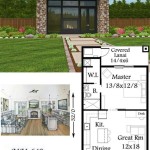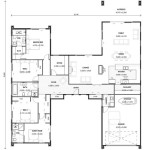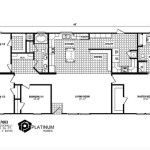```html
How To Get The Plans For Your House
Obtaining the plans for a house is crucial for various reasons, ranging from planning renovations and additions to resolving property line disputes and understanding the structural integrity of the building. The process can seem daunting, but understanding the potential sources and required steps can simplify the task. This article details the different methods available to acquire house plans and provides guidance on navigating the process.
Contacting the Original Architect or Builder
The most direct route to obtaining house plans is to contact the original architect or builder responsible for the construction of the house. If the house is relatively recent, the firm or individual might still have records of the project. Begin by researching the history of the house, which may be available through local historical societies, property records, or even online real estate databases. This information can potentially provide the name of the architect or builder. Once identified, contact them directly and inquire about the availability of the plans. It is important to be polite and explain the reasons for needing the plans. Be prepared to provide proof of ownership of the property.
Several factors can complicate this approach. The architect or builder may have retired, gone out of business, or simply not retained records for an extended period. Architectural firms often have document retention policies that dictate how long records are kept. In addition, there might be a fee associated with retrieving and copying the plans, especially if they need to be accessed from offsite storage or converted from older formats. Copyright considerations can also arise. The architect typically retains the copyright to the design, and while homeowners are usually granted implied licenses to use the plans for maintaining or renovating their own property, they may not be able to freely distribute or reproduce the plans for other purposes without explicit permission.
When contacting the architect or builder, it is beneficial to have as much information about the house as possible, including the address, year of construction, and any previous renovation details. This information can help them locate the correct set of plans more quickly. If the original architect or builder is no longer available, consider contacting their professional organization, such as the American Institute of Architects (AIA), which might have resources or directories to locate their successors or archived work.
Searching Local Government Records
Local government agencies, such as the building department or planning department, are another key source for house plans. When a house is built or undergoes significant renovations, permits are typically required. These permits often include a set of approved plans submitted by the architect or builder. These plans may be retained in the department's archives and are often accessible to the public, subject to certain restrictions.
To access these records, contact the relevant local government agency and inquire about their procedures for obtaining building permits and associated documents. They will likely require the property address and possibly the year the house was built. Some agencies may have online databases where permit records can be searched electronically. Others may require a visit to their office to conduct a manual search of their archives. Be prepared to pay a fee for copying the plans. The fee structure varies by jurisdiction and can depend on the size and complexity of the plans.
The availability of plans in local government archives varies depending on local regulations and record-keeping practices. Older houses may not have complete records available, especially if they were built before modern permitting requirements were in place. In some cases, the available plans may be partial or incomplete, focusing only on specific aspects of the house, such as structural details or electrical layouts. Furthermore, some jurisdictions may restrict access to certain information, such as the exact location of utility lines, for security reasons. Despite these limitations, local government records are often a valuable resource for obtaining house plans.
Hiring a Professional to Recreate the Plans
If the original plans cannot be located through the architect, builder, or local government records, the alternative is to hire a professional to recreate the plans. This involves engaging a qualified architect, structural engineer, or building designer to survey the existing house and create a new set of plans based on their observations and measurements. This approach can be more expensive than obtaining existing plans, but it provides an accurate and up-to-date record of the house's current configuration.
The process typically begins with a site visit where the professional will take detailed measurements of the house's exterior and interior. They will also document the location of walls, doors, windows, and other architectural features. Depending on the scope of the project, they may also inspect the structural components, such as the foundation, framing, and roof. The professional will then use these measurements to create a set of accurate and detailed plans, including floor plans, elevations, and sections. They may also include details about the house's mechanical, electrical, and plumbing systems.
When hiring a professional to recreate the plans, it is important to choose someone with relevant experience and qualifications. Check their credentials, review their portfolio, and ask for references from previous clients. Discuss your specific requirements and expectations upfront to ensure that they understand the scope of the project and can deliver the desired results. This option is particularly useful when significant alterations have been made to the original structure over time, rendering any existing plans obsolete. recreated plans will reflect the current state of the building structure.
Furthermore, depending on the purpose of the plans, additional services may be required, such as structural calculations or energy efficiency assessments. Discuss these needs with the professional and ensure that they are included in the scope of work. The recreated plans can then be used for various purposes, such as planning renovations, obtaining building permits, or resolving property line disputes.
Another important consideration is the level of detail required in the recreated plans. For example, if the plans are only needed for general reference, a basic set of floor plans and elevations may be sufficient. However, if the plans are intended for construction purposes, they will need to include more detailed information, such as structural details, material specifications, and construction notes. The level of detail will impact the cost and time required to complete the project.
Finally, consider the long-term value of having accurate and detailed house plans. While the initial cost of recreating the plans may be significant, they can save time and money in the long run by providing a clear and comprehensive record of the house's construction. This can be especially beneficial when undertaking future renovations or when selling the property.
```
House Plans How To Design Your Home Plan

House Plans How To Design Your Home Plan

Floor Plans Learn How To Design And Plan

Floor Plans Learn How To Design And Plan

Tips For Selecting The Right Floor Plan Your Home Sater Design Collection

How To Find The Original Floor Plans For Your House

How To Get Blueprints Of Your House

House Plans How To Design Your Home Plan

Find House Plans For Your Old Blueprint Search Nethouseplansnethouseplans

Make Your Own Blueprint How To Draw Floor Plans








